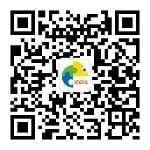我的應用程序應該加載某些數據作為輸入文件(在本文中,我將給出以數據框形式編寫的部分數據,以便您可以使用它來運行我的示例)。然后繪制三個繪圖。我希望當用戶單擊頁面頂部的繪圖時,將根據單擊信息顯示第一個新繪圖,當顯示新繪圖時,我希望根據第一個新繪圖的單擊信息繪制第二個新繪圖。
library(dplyr)
library(shiny)
library(shinydashboard)
library(shinyWidgets)
library(ggplot2)
library(gridExtra)
library(scales)
library(grid)
library(RColorBrewer)
library(officer)
library(svglite)
library(rvg)
library(readxl)
library(tools)
library(rsvg)
body <- dashboardBody(
fluidRow(
tabBox(
# The id lets us use input$tabset1 on the server to find the current tab
id = "tabset1",height = 750,width=20,
tabPanel("Summary",dataTableOutput(outputId = "table")),
tabPanel("Visualization",sliderInput("scalegvt","Scale Data by:", min = 0, max = 100, value = c(70,100)),plotOutput("p1", height = 1000,click = "plot_click")
)
)
)
)
side<- dashboardSidebar(
width = 290,
sidebarMenu(
menuItem("Summary",tabName = "Summary") ,
uiOutput('choose_Da'),
selectizeGroupUI(
id = "m",
inline = FALSE,
params = list(
Lot = list(inputId = "Lot", title = "Lot"),
wafer = list(inputId = "wafer", title = "wafer"),
M_datum = list(inputId = "M_Datum", title = "M_Datum"),
Yield = list(inputId = "Yield", title = "Yield")
)
),inline=FALSE,
menuItem("Visualization",tabName = "Visualization")
))
ui <- function(request) {
dashboardPage(
dashboardHeader(title = "Yield Report",titleWidth = 290),
side,
body
)
}
server = function(input, output,session) {
newscale <- reactive({
req(input$scalegvt)
})
mydt<-data.frame(Lot=c(rep("A",4),rep("b",5),rep("n",3),rep("x",2)),M_Datum=as.Date(c("2012-06-05","2012-06-15","2012-06-10","2014-11-17","2014-03-18","2014-06-15","2014-06-10","2014-06-17","2015-11-27","2016-08-15","2016-09-10","2016-10-27","2017-09-10","2017-10-12")),wafer=(c(rep(5,14)+1:14)),Yield=c(rep(10,14)+57))
dz<-reactive({
req(res_mod())
dat<-res_mod()
dt<-dat[dat$M_Datum >=input$dateRange[1] & dat$M_Datum <= input$dateRange[2],]
dt[,2]<-as.Date(format(as.Date(dt[,2]), "%Y-%m-01"))
req(dt$M_Datum,dt$Yield)
dr<-data.frame("M_Datum"=dt$M_Datum,"Yield"=dt$Yield)
req(dr$M_Datum,dr$Yield)
dx<-aggregate(Yield~M_Datum,dr,mean)
req(dx$M_Datum,dx$Yield)
dx$M_Datum<-format(dx$M_Datum, "%b %Y")
return(data.frame("M_Datum"=dx$M_Datum,"Yield"=dx$Yield))
})
#observeEvent(input$plot_click,
#{ a<- reactive(nearPoints(dz(), input$plot_click, threshold = 10, maxpoints = 1,
# addDist = F))
# b<-reactive(match(substr(a()$M_Datum,1,3),month.abb))
# req(res_mod())
#dat<-res_mod()
#dt<-dat[dat$M_Datum >=input$dateRange[1] & dat$M_Datum <= input$dateRange[2],]
#dt<-dt[substr(dt$M_Datum,6,7)==as.character(b()),]
#req(dt$Lot,dt$Yield)
#dr<-data.frame("Lot"=dt$Lot,"Yield"=dt$Yield)
# req(dr$Lot,dr$Yield)
# dx<-aggregate(Yield~Lot,dr,mean)
# req(dx$Lot,dx$Yield)
# dza<-data.frame("Lot"=dx$Lot,"Yield"=dx$Yield)
# output$p2 <- renderPlot({ ggplot(dza, aes(x = Lot,y = Yield,group = 1)) +
# geom_point()})
#})
output$choose_Da <- renderUI({
dateRangeInput('dateRange',
label = 'Filter by date',
start = min(mydt$M_Datum) , end = max(mydt$M_Datum),min=min(mydt$M_Datum),max=max(mydt$M_Datum)
)
})
res_mod <- callModule(
module = selectizeGroupServer,
id = "m",
data = mydt,
vars = c("Lot","M_Datum","Yield","wafer"),
inline=FALSE
)
output$table <- renderDataTable({
dato<-res_mod()
return(dato[dato$M_Datum >= input$dateRange[1] & dato$M_Datum <= input$dateRange[2],]) },
options = list(scrollX = TRUE))
filtredplot<-reactive({
req(res_mod())
dat<-res_mod()
dt<-dat[dat$M_Datum >=input$dateRange[1] & dat$M_Datum <= input$dateRange[2],]
dt[,2]<-as.Date(format(as.Date(dt[,2]), "%Y-%m-01"))
req(dt$M_Datum,dt$Yield)
dr<-data.frame("M_Datum"=dt$M_Datum,"Yield"=dt$Yield)
req(dr$M_Datum,dr$Yield)
dx<-aggregate(Yield~M_Datum,dr,mean)
req(dx$M_Datum,dx$Yield)
dz<-data.frame("M_Datum"=dx$M_Datum,"Yield"=dx$Yield)
dz$M_Datum<-factor(format(dz$M_Datum, "%b %Y"), levels=format(sort(unique(dz$M_Datum)),"%b %Y"))
hline_data <- data.frame(y = c(mean(dz$Yield)-sd(dz$Yield),mean(dz$Yield), mean(dz$Yield)+sd(dz$Yield)), type = factor(c(2, 1, 2)),
stringsAsFactors = FALSE)
ggplot(dz, aes(x=M_Datum, y=Yield,group = 1)) +
geom_point(size=7,colour="#007A9D",shape=4) +
theme(axis.text.x = element_text(angle = 0, vjust = 0.5, hjust=1))+
theme(legend.direction = "horizontal", legend.position = "top", legend.key = element_blank(),
legend.background = element_rect(fill = "white", colour = "white"),
axis.text.y.left = element_text(color = "#007A9D"),
axis.title.y.left = element_text(color = "#007A9D"),
plot.title = element_text(color="#007A9D")
)+
ylab("Mean Yield")+
xlab("")+
ggtitle(paste0("FCM-Yield Trend :"," ",paste0(c(input[["m-Customer_Name"]],input[["m-Local_Process_Id"]],input[["m-Process_Family"]],input[["m-MEMS_flag"]],input[["m-Device"]]),collapse = ",")))+
ylim(newscale())+
geom_hline(data = hline_data,
aes(yintercept = y, linetype = type, colour = type)) +
scale_colour_manual(values = c("#007A9D", "#EF783D"),
labels = c("Mean", "Mean+-sd"),
name = "Key:") +
scale_linetype_manual(values = 1:2,
labels = c("Mean", "Mean+-sd"),
name = "Key:")
})
output$p1<-renderPlot({
filtredplot() })
}
shinyApp(ui,server)
在代碼轉向注釋的那一部分中,我嘗試使用clik信息將月份名稱轉換為數字以使用它,以便過濾數據,這意味著我想繪制批次(x軸)與產量(作為y軸,以平均值(avarage)的形式)的圖,這樣我可以得到該月份產量pro批次的平均值,然后當我再次單擊時,我想得到第二個顯示產量的圖(y軸未按本次平均值聚合)與晶圓(x軸)的比較,當然,僅適用于通過單擊第一個新繪圖選擇的批次。

發布的代碼不是最小的可復制示例MRE。我沒有經歷過。但這里有一個MRE來實現您描述的任務:使用
nearPoints()函數基于第一個圖(p1)的plot_click輸出第二個圖(p2)。以下是使用您的代碼編輯的上述解決方案。點擊p1會輸出第二個繪圖p2,點擊p2會輸出第三個繪圖p3。我把繪圖縮小了,因為我在筆記本電腦上工作。請注意,由于示例數據較小,并非所有數據點都會導致有效的單擊。但有足夠的“好”點來測試解決方案。